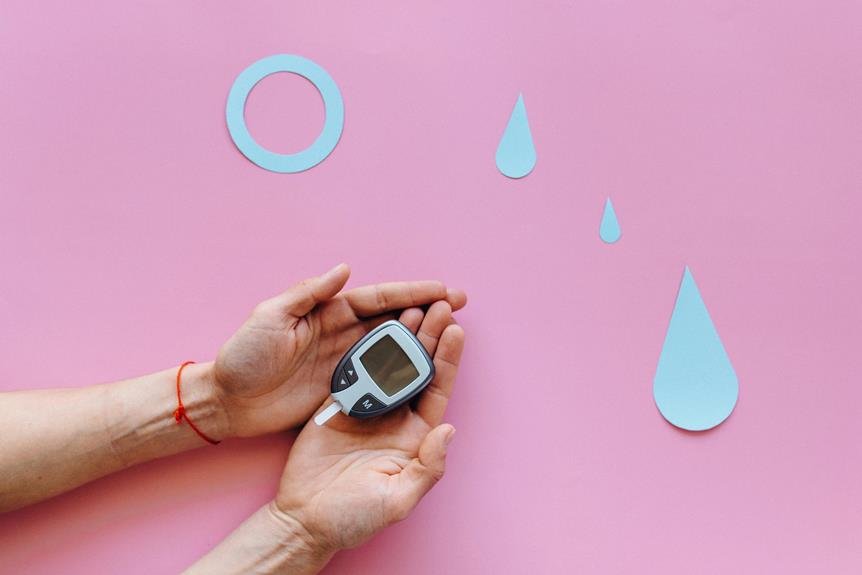
Have you ever wondered how high-fiber foods can impact your diabetes management? The connection between fiber intake and blood sugar levels is a topic worth exploring for individuals seeking to improve their overall health. By understanding the role of fiber in regulating glucose levels, you might uncover valuable insights that could potentially transform your approach to managing diabetes.
Benefits of High-Fiber Foods
High-fiber foods can significantly benefit you in managing diabetes by helping regulate blood sugar levels and improving overall digestive health. Including foods like fruits, vegetables, whole grains, and legumes in your diet can make a notable difference.
Fiber plays a crucial role in diabetes management by slowing down the absorption of sugar, preventing rapid spikes in blood glucose levels. This slower digestion also helps you feel full for longer periods, aiding in weight management—a key aspect of diabetes control.
Moreover, a high-fiber diet promotes healthy gut bacteria, which can positively impact your immune system and reduce inflammation. This is particularly important for individuals with diabetes, as they're at a higher risk of developing certain inflammatory conditions.
Impact on Blood Sugar Levels
Slowing down the absorption of sugar, fiber-rich foods can have a significant impact on regulating your blood sugar levels when managing diabetes. High-fiber foods like whole grains, fruits, vegetables, and legumes help prevent rapid spikes in blood sugar after meals. When you consume fiber, it forms a gel-like consistency in your stomach, slowing down the digestion and absorption of carbohydrates. This leads to a gradual release of sugar into your bloodstream, preventing sudden blood sugar spikes. By stabilizing your blood sugar levels, fiber-rich foods can also help improve insulin sensitivity, making it easier for your body to utilize insulin effectively.
Incorporating high-fiber foods into your meals can also contribute to better long-term blood sugar control. Aim to include a variety of fiber sources in your diet to experience the full benefits. Remember to drink plenty of water when increasing your fiber intake to help with digestion and prevent any discomfort. By choosing whole, unprocessed foods rich in fiber, you can better manage your blood sugar levels and overall health when living with diabetes.
Top High-Fiber Food Sources
To maintain stable blood sugar levels, incorporating a variety of fiber-rich foods into your meals is key, and knowing the top sources can help you make informed choices for managing your diabetes effectively.
Some of the top high-fiber food sources include fruits like berries, apples, pears, and oranges. These fruits not only provide fiber but also essential vitamins and minerals.
Vegetables such as broccoli, carrots, spinach, and Brussels sprouts are excellent sources of fiber that can be easily incorporated into your daily meals.
Whole grains like oats, quinoa, brown rice, and whole-grain bread are also high in fiber and can be great options for adding variety to your diet.
Legumes such as lentils, chickpeas, black beans, and kidney beans aren't only rich in fiber but also protein, making them a smart choice for managing blood sugar levels.
Nuts and seeds like chia seeds, flaxseeds, almonds, and walnuts are additional high-fiber options that can be included as snacks or toppings to salads and yogurt for added crunch and nutrients.
Tips for Including Fiber in Diet
For better blood sugar management and overall health, consider incorporating fiber-rich foods into your daily meals in creative ways. Start your day with a high-fiber breakfast by adding chia seeds or ground flaxseeds to your yogurt or oatmeal. Snack on whole fruits like apples, berries, or pears instead of processed snacks to boost your fiber intake. Swap out white rice and pasta for whole grain options like quinoa, brown rice, or whole wheat pasta to increase fiber in your meals.
When preparing meals, include plenty of vegetables like broccoli, Brussels sprouts, and carrots, which aren't only rich in fiber but also packed with essential nutrients. Experiment with legumes such as lentils, chickpeas, or black beans in soups, salads, or stews to add a fiber punch to your diet. Incorporating nuts and seeds into your meals or enjoying them as snacks can also contribute to your daily fiber intake.
Remember to stay hydrated and gradually increase your fiber intake to prevent digestive discomfort. By making these simple swaps and additions, you can enjoy a delicious and fiber-rich diet that supports your diabetes management and overall well-being.




